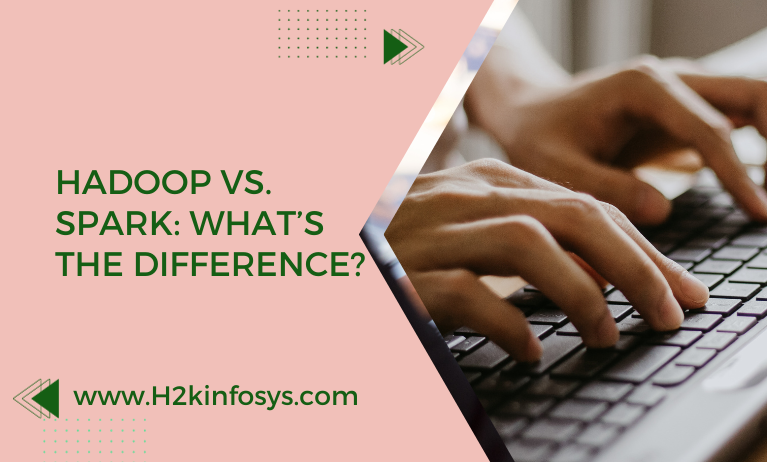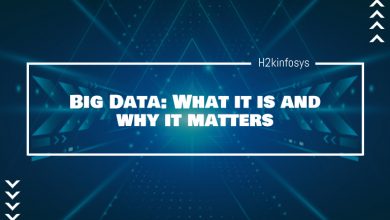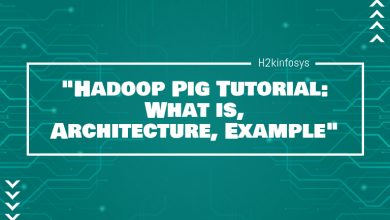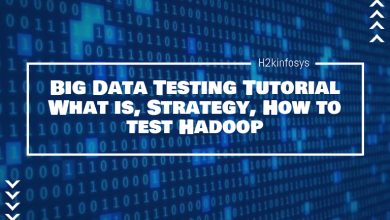Hadoop vs. Spark: What’s the Difference?

The Apache Software Foundation created Hadoop vs. Spark, two popular open-source big data architectural technologies. An enormous ecosystem of open-source solutions for managing, processing, preparing, and analysing large data collections is built into every framework. Check out the online Big Data course to learn more.
What is Apache Hadoop?
Apache Hadoop is an open-source software tool that makes it possible for a network of computers, or “nodes,” to solve enormous and complex data problems, allowing users to manage massive data sets (from gigabytes to petabytes). For example, web server logs, Internet clickstream records, Internet of Things sensor data, and unstructured and semi-structured data are all processed and stored by this highly scalable and economical system.
The Hadoop framework has the following advantages:
- Data security in the event of a hardware malfunction.
- Large scalability from hundreds of machines to a single server.
- Real-time analytics for decision-making processes and historical analyses.
What is Apache Spark?
An open-source data processing engine for large data sets is called Apache Spark. Similar to Hadoop, Spark divides up big jobs among several nodes. It does, however, typically operate more quickly than Hadoop and processes and caches data using random access memory (RAM) rather than a file system. Spark can now handle use situations that Hadoop is unable to.
The Spark framework has the following advantages:
- A single-engine that can handle graph processing, machine learning (ML), streaming data, and SQL queries.
- For lesser workloads, in-memory processing, disk data storage, etc., can be 100 times faster than Hadoop.
- APIs are made to be simple to use when processing and manipulating semi-structured data.
The Hadoop ecosystem
Advanced analytics (such as predictive analysis, data mining, machine learning (ML), etc.) are supported by Hadoop for data that has been saved. It makes it possible to divide up massive data analytics processing jobs into smaller assignments. A method (such as MapReduce) is used to complete the tiny jobs in parallel, and the results are then dispersed throughout a Hadoop cluster (i.e., nodes that do parallel computations on massive data sets).
There are four main components that make up the Hadoop ecosystem:
- Hadoop Distributed File System (HDFS): Large data sets are managed via the Hadoop Distributed File System (HDFS), a primary data storage system that runs on commodity hardware. It also offers great fault tolerance and high throughput data access.
- Yet Another Resource Negotiator (YARN): A cluster resource manager called Yet Another Resource Negotiator (YARN) schedules jobs and distributes resources (such as CPU and memory) to apps.
- Hadoop MapReduce: divides large data processing jobs into smaller ones, disperses the smaller jobs among several nodes, and executes each task individually.
- Hadoop Common: Sometimes known as Hadoop Core, it is a collection of shared tools and libraries that the other three modules rely on.
The Spark ecosystem
The sole data and artificial intelligence (AI) processing framework is Apache Spark, the biggest open-source data processing project. This allows users to execute cutting-edge machine learning (ML) and artificial intelligence (AI) algorithms after doing extensive data transformations and analysis.
There are five main modules that make up the Spark ecosystem:
- Spark Core: The underlying execution engine that manages input and output (I/O) activities and plans and assigns jobs.
- To help users handle structured data more efficiently Hadoop vs. Spark collects metadata about structured data.
- Both Structured Streaming and Spark Streaming offer additional stream processing features. Data from several streaming sources is divided into micro-batches using Spark Streaming to create a continuous stream. Based on Spark SQL, Structured Streaming lowers latency and makes programming easier.
- The Machine Learning Library (MLlib) is a collection of scalable machine learning algorithms together with feature selection and pipeline-building tools. DataFrames, the main API for MLlib, offers consistency between several programming languages, including Python, Scala, and Java.
- GraphX is an intuitive computing engine that facilitates the interactive creation, alteration, and examination of graph-structured data that is scalable.
Comparing Hadoop and Spark
MapReduce is enhanced by Hadoop vs. Spark. The main distinction between MapReduce and Spark is that the latter processes data on disk, whereas Spark processes data in memory for later steps. As a result, Spark processes data up to 100 times quicker than MapReduce for lesser workloads.
Moreover, Spark schedules tasks and orchestrates nodes throughout the Hadoop cluster using a Directed Acyclic Graph (DAG), in contrast to MapReduce’s two-stage execution approach. Fault tolerance is made possible by this task-tracking procedure, which applies recorded processes to data from an earlier state.
Let’s examine the main distinctions between Hadoop vs. Spark in six important scenarios:
- Performance: Because Spark employs random access memory (RAM) rather than reading and copying intermediate data to disks, it operates more quickly. Hadoop uses MapReduce to process data in batches while storing it from many sources.
- Cost: Because Hadoop processes data on any kind of disk storage, it operates at a cheaper cost. Because Spark uses in-memory computations for real-time data processing and needs a lot of RAM to spin up nodes, it operates more expensively.
- Processing: Hadoop is well suited for batch and linear data processing, even though both technologies handle data in a distributed setting. Spark is the best tool for processing streams of live, unstructured data in real-time.
- Scalability: With the Hadoop Distributed File System (HDFS), Hadoop swiftly expands to meet demand when data volume increases quickly. Large amounts of data are then stored on the fault-tolerant HDFS, which is used by Spark.
- Security: While Hadoop employs a variety of access control and authentication techniques, Hadoop vs. Spark improves security using a shared secret or event logging authentication. Spark can integrate with Hadoop to achieve an even better security level, even though Hadoop is generally more secure.
- Machine learning (ML): Because Spark comes with MLlib, which enables iterative in-memory ML computations, it is the better platform in this category. It also has tools for building pipelines, evaluating them, and performing classification, regression, persistence, and other tasks.
Misconceptions about Hadoop and Spark
Common misconceptions about Hadoop
- Hadoop is cheap: Maintaining the server might be expensive, despite the fact that it is open source and simple to set up. Big data management features like in-memory computing and network storage might run you as much as USD 5,000.
- Hadoop is a database: While storing, managing, and analysing distributed data, Hadoop vs. Spark does not require queries for retrieving data. As a result, Hadoop is no longer a database but a data warehouse.
- Hadoop does not help Small and Medium-sized businesses (SMB): Hadoop isn’t helpful to SMBs because “big data” isn’t just for “big companies.” Smaller businesses may use Hadoop’s potential thanks to its user-friendly capabilities, such as Excel reporting. Performance in a small business can be significantly improved by having one or two Hadoop clusters.
- Hadoop is hard to set up: Programming for MapReduce is made easier by the abundance of graphical user interfaces (GUIs), even though Hadoop administration can be challenging at higher levels.
Common Misconceptions about Hadoop vs. Spark
- Although it makes good use of the least recently used (LRU) algorithm, Spark is an in-memory technology rather than a memory-based one.
Spark is always 100 times faster than Hadoop: According to Apache, Spark can handle workloads up to 100 times faster than Hadoop for small workloads, while it can only handle workloads up to 3 times faster for large ones.
- Spark presents new developments in data processing technologies: While Spark efficiently leverages the LRU algorithm and data processing pipelines, these features were already present in massively parallel processing (MPP) databases. On the other hand, Spark differs from MPP in that it is open-source.
Conclusion To learn more about Hadoop and Spark, check out the Big Data online training.





